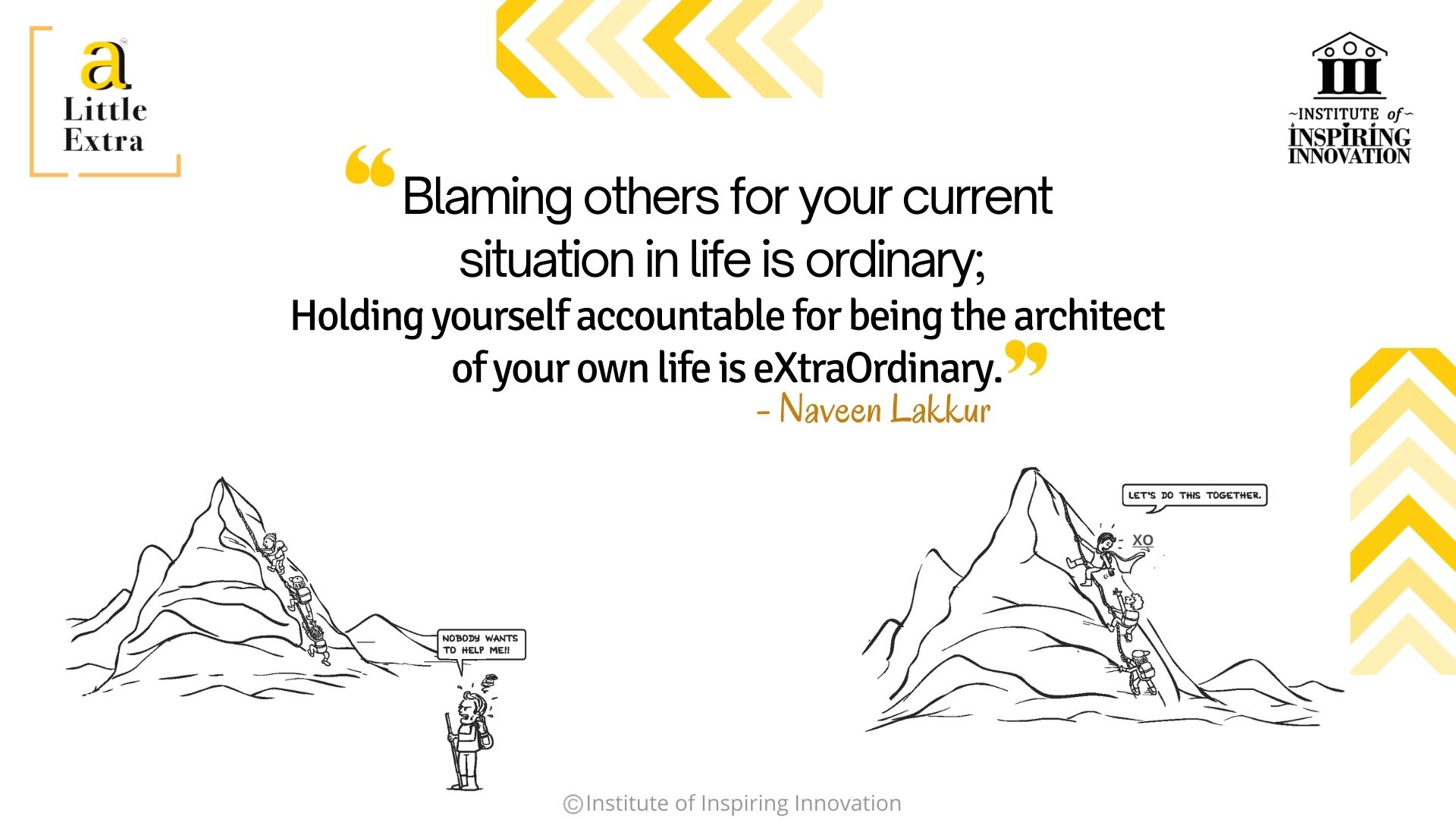Holding yourself accountable for being the architect of your own life is eXtraOrdinary

“Blaming others for your current situation is ordinary; Holding yourself accountable for being the architect of your own life is eXtraOrdinary.” – Naveen Lakkur
Nobody is immune to unforeseen circumstances that will derail our life, our plans, or our state of mind. It happens when people do not conform with our plans, or if the rules or the law of the land does not allow us to make good on them. As a defence mechanism, we all blame others for our current situation and may refuse to take responsibility for faltering with our plans. However, some people refuse to stand down despite being beaten down by circumstances.
They instead hold themselves accountable for the failure of their personal and professional plans. Some of them make plans to come out of a situation and go a Little Extra by holding themselves accountable for the situation and become the architect of their own lives to come out of a tough situation. They not only improve their lives and others but in the process, they create an impact on society. Here are some examples.

Leave a comment